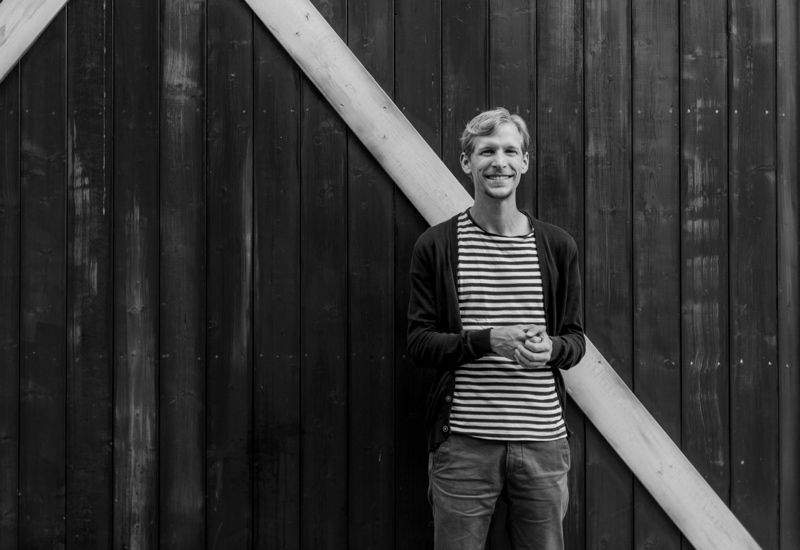Artist Portrait: Martin Listabarth

Meet pianist and composer Martin Listabarth. Martin is a jazz pianist and composer based in Vienna. His music is a true marriage of hand, heart, and head. Martin’s new album is titled Dedicated and is a musical tribute to 10 people who have fascinated and inspired him—from the fields of soccer, mathematics, mountain climbing, merry-go-rounds, painting, and more. We did this interview via email and I couldn’t be happier with this post in which he shares his compositional/improvisational process, growing up in music, and kind words for both teachers and students. Thank you Martin.
I love the way you connect your experiences directly into your compositions. Have you always composed in this way?
Thank you. I think that this way of composing has helped me a lot to find my own musical language and to find inspiration for my compositions. This is something that has developed slowly for me over the years. As I am interested in many different things outside of music, this became an exciting opportunity for me to incorporate these areas of interest into my music.
What was your growing up in music like?
From the age of five, I received classical piano lessons. From the beginning, I enjoyed taking parts of the pieces I was supposed to learn, repeating them, changing them and playing around with them – so that was my natural introduction to improvisation (even though I didn’t know the term for it at the time). Besides playing the piano, I also loved singing as a child, both at home and in a choir. I also have 3 brothers (all of them playing different instruments). Together with them I had my first band and they were my first “victims“ to play my first composition attempts. Later, I studied both jazz piano and classical piano at the University of Music and Performing Arts in Vienna.
Can you give us some examples of passages from your new album, Dedicated and how they directly relate to their inspiration?
Sure, according to the title, each track on this album is dedicated to one specific person. I was looking for things in the life and work of different people, which were not only inspiring to me, but which could be set to music and form the basis for the respective composition.
One example is Turing’s Pattern dedicated to Alan Turing, who was a British logician, mathematician and cryptanalyst: He was instrumental in decrypting the secret Nazi code during the second world war. Since I’ve always been fascinated by the subject of codes, I was looking for a way to process codes in a musical way in this composition. I hid musical codes in this piece of music. These are based on the motivic material of the numerical sequence 761954 (Turing’s date of death on 7 June 1954). For example, the main melody consists exactly of this numerical sequence. The accompaniment pattern 761954, that recurs throughout the piece, consists only of the intervals 1954 (only the numbers of the year). There are also more hidden codes to discover in this piece. 😉
Another example would be The Hand of God (dedicated to Diego Maradona). Named after his legendary Hand of God goal, this piece is my tribute to one of the best soccer players of all times. His dribbling skills and witty playfulness inspired me to write this piece of music. As Maradona was known for his strong left foot, it was important for me to make sure that my left hand was kept busy and looms large in this piece.
One last example: The Red Tree, is dedicated to Marianne Werefkin (an expressionist painter). The power of her work has always been captivating for me. In her painting The Red Tree the focus is on a red tree. In the background there is a mighty blue mountain from which rivers in blue seem to flow down. To the right there is a yellow bush depicted in moving lines and vortices. This picture is dominated by three basic colours and for each one I chose a musical equivalent. Inspired by Skrjabin’s colour symbolism in music, which matches each keynote with a colour, this piece consists of three parts: the red tree (red = keynote C), the blue mountain (blue = keynote F#) and the yellow bush (yellow = keynote D).
I encourage my students to connect performances of others’ music to their own experiences, color, history, literature, etc. Yet there’s always someone who says something on the order of, “I can’t do it that way. I just have to feel it spontaneously,” or who is rigorously tied to the markings in the score. How can someone like this begin to open up to the idea of a musical narrative? Should they?
I think it’s great that you encourage your students to perceive music in this way and to look for connections between certain music and their own world. When I hear music that touches me, it happens to me quite automatically that I ask myself: What could have inspired the composer? What situations/ persons/ places/ etc. in my own life does this music remind me of? And even if my associations should be quite different from those of the composer, I am convinced that these images and associations will help me to develop my interpretation of the piece.
To feel it spontaneously is great, but to discover new aspects of a composition, I would recommend trying to ask myself as a first step: In how many different ways can I look at a certain part of a piece and what images/associations come to mind (the more varied the better)? As a second step, I would play the same section in all the different moods and try out to match my interpretation with the associations as close as possible. As a final step I would play the whole piece and now spontaneously choose one of the aspects I’ve discovered in the previous steps.
Please walk us though a typical musical day.
I usually start my practice sessions with some music by Bach (mostly something from The Well Tempered Clavier or from his Chorales). After that I usually transcribe something that interests me at the moment (this can be a certain passage from a jazz solo, a jazz standard that I want to learn, or simply a pop song that excites me at the moment). Then I continue with improvisation exercises or work on new compositions.
Often there are rehearsals with other musicians and I try to listen to music that is new to me every day (even if it’s only for a few minutes). Of course, the typical day of a musician does not only consist of making or listening to music – there is also the organizational part (like booking gigs) I have to do.
What was the most humorous musical thing that has ever happened to you?
I always laugh when I see videos of myself making strange noises and faces while singing along to improvising phrases – something I never realize at the moment of playing 😉
How do you refine your compositions? What happens to the measures or motives that inevitably must be cut?
Since all of my compositions also contain improvised parts, there is almost never a final version of my pieces, but they change every time I play them. The process of cutting out things mainly happens in the studio while recording my compositions: If, when listening to the recorded versions, I feel that there are lengths or that the story is not to the point, I may decide to record shorter or more compact versions.
What advice do you have for young (pre-college) composers?
If you enjoy creating your own music, just do it. Don’t be too perfectionist, but finish one piece and then move on to the next one. In the beginning, don’t be afraid to imitate things you like: It can be a good starting point to set yourself the goal of writing a piece in the style of “XY”. During this process, the things you particularly like will become clear and from this your own musical language will develop over time.
What advice do you have for teachers of young composers?
Motivate your young composers to finish their pieces, no matter how short they may be. If they already have an idea of what they want to write, encourage and support them in their efforts regardless of the style they have chosen. If they struggle to get started, it can be helpful to set specific goals and constraints, to create manageable tasks and avoid overwhelming yourself – this can be a certain number of bars, a key, a time signature, a tempo, a style, …
Please add anything else that you wish and again many, many thanks for taking the time to talk with me and all the Piano Addicts out there.
Thank you for your interesting questions. It was fun to reflect on my own creative process and practice habits. I also really enjoyed reading some of your blog posts – so many great, refreshing approaches for both students and teachers.


